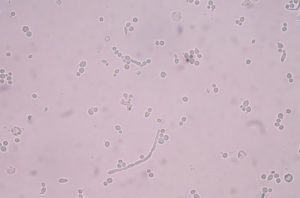Oh, regrets.
The following is a timed essay that I did as practice for my upcoming Certified Wine Educator exam. I was halfway through the total allotted time (60 minutes) when I realized that I should have structured it to be compare/contrast wild and commercial yeast by topic rather than the clumsy way I did it here (which was everything-about-each-yeast-separately).
I guess that is why I practice.
**************************************************
What is your take on the cultured vs. wild yeast topic? Is the claim of “wild yeast fermentation” valid, or does cultured yeast dominate the wineries of the world to the extent that wild yeasts are subdued?
A 2013 study by the University of British Columbia found that spontaneous fermentations with so-called “wild” yeasts were quickly overtaken by commercial yeast strains from the air, and these stronger strains could complete the fermentations to dryness. There were some flaws in the study, but the subsequent reporting raised the question: do wild yeasts matter?
It is an important question as many wineries claim to use ‘wild’ or ‘native’ yeast and use this as a marketing point of differentiation, yet this study, and other anecdotal evidence around the world, found that even without inoculating, the stronger, commercial yeast strains dominate fermentations. Commercial yeasts (generally Saccharomyces cerevisiae) are available for sale from any oenology store. These yeasts have been separated out by a microbiologist for various traits, multiplied, packaged and sold ready to add to your must. Wild yeasts, on the other hand, are native to a particular cellar. They live on the equipment, in the vineyard and in the air. The wild yeast are from other strains and oddly enough, the discussion of wild versus cultured has been so significant that oenology companies are now culturing wild yeast strains for sale.
Cultured yeasts have been an input to winemaking since Pasteur discovered the cause of fermentation in the 19th century. Many winemakers today will use cultured yeast for their specific properties (low foaming, low VA production or maybe tolerance to high alcohol) and it is this predictability that make cultured yeast so relevant. Being predictable means that the winemaker can control the quality and expression of the vineyard a little better. The winemaker at Smith-Madrone has said that he used wild ferments on his Pinot Noir for over 35 years before switching to cultured yeasts and cited that the cultured yeast allowed for a more pure expression of fruit.
Of course very few technical sheets or winemakers will openly cite what strain of commercial yeast they are using (but they would be open about other things like, which forest they get their barrels from) as it interferes with the consumers’ romantic notion of winemaking. There is also a fear of standardization: could wines that use the same yeasts (which impacts fermentation kinetics) start to taste the same?
Wild yeast fermentations certainly add complexity to a wine partially due to the different metabolites of these yeasts. Fermentation kinetics will also be different (might be slower to start and warm up) which will impart their own characteristics. Wild yeasts, when taken from the native environment, certainly saves money for the winery, which must be considered, and the romantic notion that wine is merely grapes carefully guided to the bottle will stay intact.
But most truly wild yeasts (non-Saccharomyces cerevisiae) have many drawbacks, mainly, that many of them die around 4-6% alcohol, implying that, even if a cellar has never had a packaged yeast brought into the area, Saccharomyces cerevisiae must finish the job anyway. This reason alone leaves the question of using a commercial yeast, which has the least amount of risk, as a no-brainer, but also that most aroma differences in wines made by wild versus natural yeasts are lost within the first 12 months, so again, why bother?
Knowing that a microbiologist can very easily separate our any yeast strains and reproduce it to use for a fermentation, it should be acknowledged that all yeast could really considered to be wild. Some have just been ‘tamed’. Also consider that the human hand is as much a part of the definition of terroir as the soil, the climate or even the grape variety. The winemakers’ job is to not destroy the individual terroir of the wine. If a wild fermentation starts to generate high amounts of volatile acidity because the yeasts are sluggish to get fermentation started, is this volatile acidity interfering with terroir or part of it?
In the end, it seems that the debate of wild yeast versus commercial yeasts is a philosophical debate. Studies have proven that wild yeasts and commercial yeasts co-exist in many fermentations and contribute their own positive and negative aspects to a finished wine, so the choice depends on the style of wine you are making and for what commercial segment of the market.


